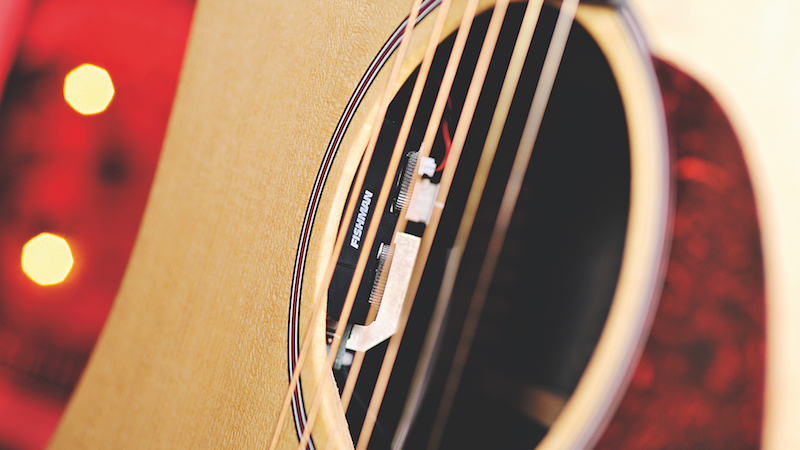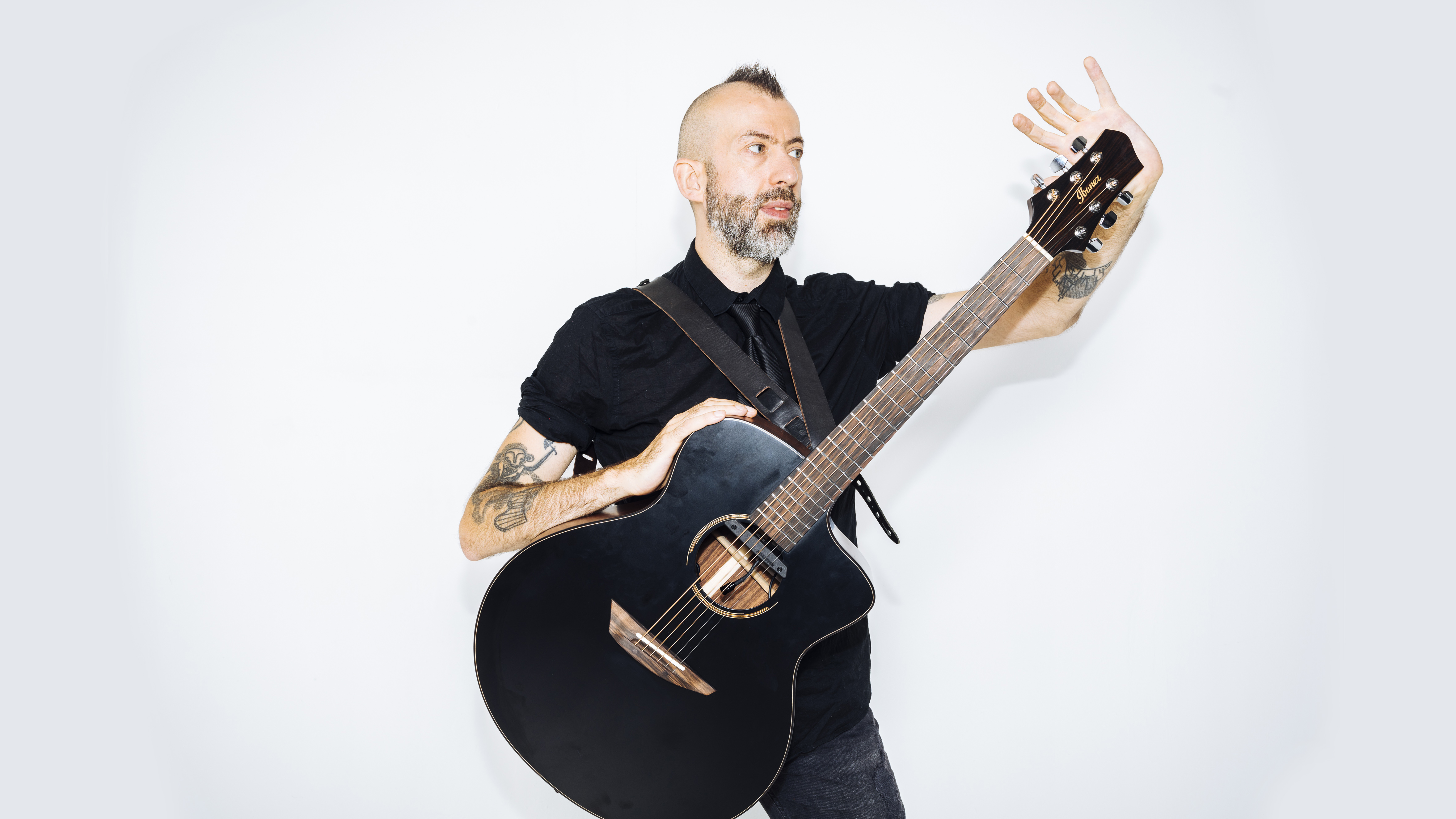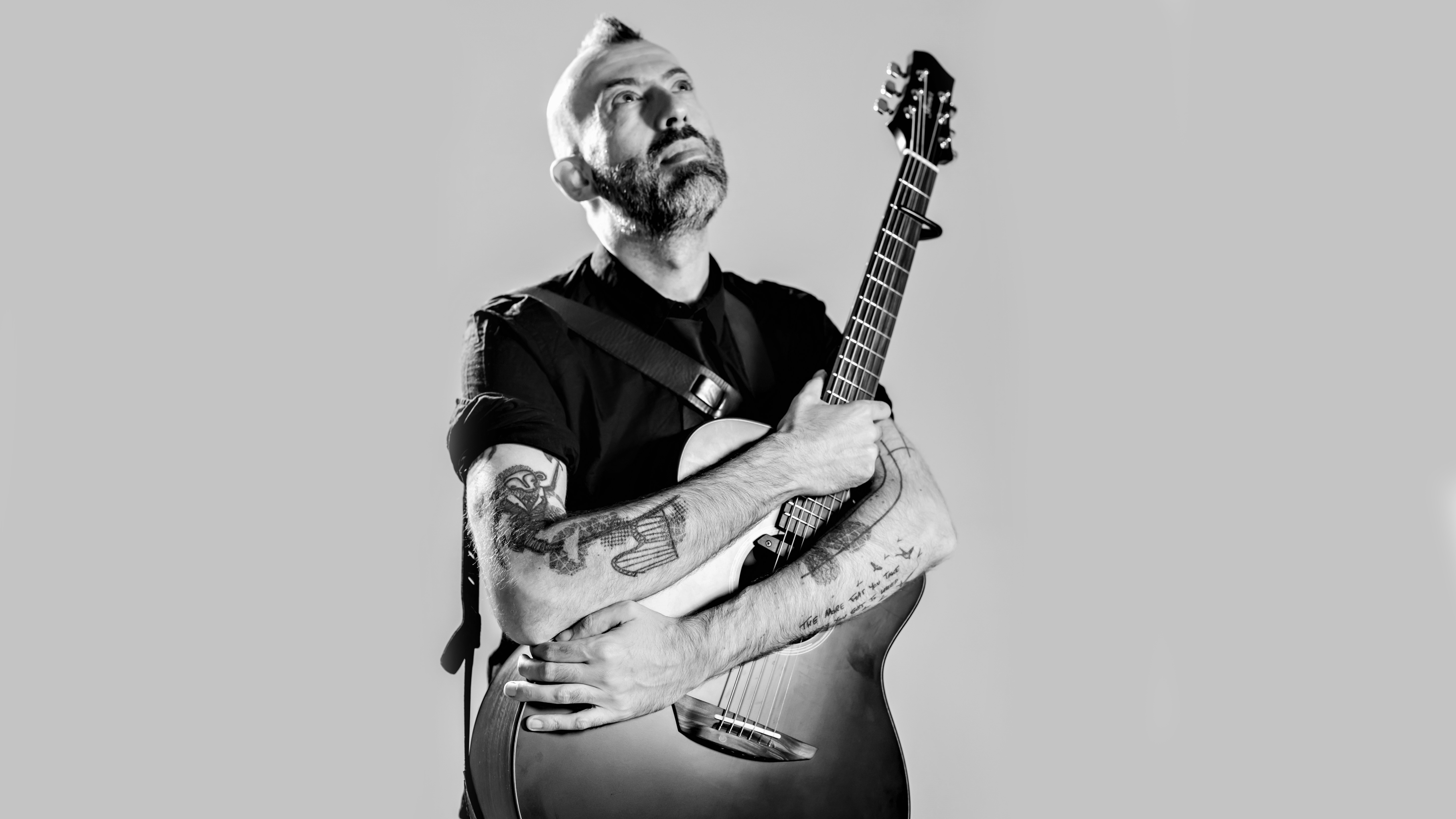Jon Gomm interview: "The Internet helps you to learn anything you want, but it might not help you to know what you need"
Advice, an inspirational new album and joining the Ibanez family with a modern master of acoustic guitar

“It’s been a childhood dream of mine,” says Jon Gomm, when MusicRadar asks about his move to Ibanez and the new signature model acoustic guitar in development. The English singer-songwriter and Japanese instrument manufacturers are currently designing what they hope to be the ultimate acoustic for modern fingerstyle…
“My local guitar store used to get an extra copy of the new Ibanez catalogue for me, and I’d cut out the pictures of Joe Satriani and Steve Vai and put them on my bedroom wall,” continues Jon.
"It’s so exciting that a company like Ibanez has this belief in the modern fingerstyle genre"
“Right now, me and most of my peers are using highly limited boutique guitars and specialised pickups, and there aren’t any more accessible guitars which can play that style and get that sound. It’s so exciting that a company like Ibanez has this belief in the modern fingerstyle genre."
It was the video for Cocoon – his first single in seven years, serving as the lead single from fourth full-length The Faintest Idea – in which keen-eyed fans first spotted the logo on the headstock of his new instrument.
However, the new material is notable for much more than the guitar in his hands, blending the worlds of analogue and digital courtesy of icy textures and synths from Australian musician Andy Sorenson. For Gomm, it’s incredibly new and exciting territory indeed…
"I think perhaps I’ve found a ‘style’ more. This is the first time I’ve said that!"
The reaction to the new tracks ahead of release was really positive. Tell us the story behind the new music and how you wrote it?
“There’s a depth to the new music, and people seem to be finding it, and I’m relieved and happy to be making that connection with people. I think people think of modern fingerstyle or percussive guitar playing as being all about technique, but I want to convey meaning, feeling, tell stories, just like any other composer.
Want all the hottest music and gear news, reviews, deals, features and more, direct to your inbox? Sign up here.
"I’ve had a lot of stuff happen in my life in the past few years, which has forced me to realise that I’m not separate from everyone and everything, no matter how much I might fight to keep myself safely apart. And I’ve put those events, and the lessons I’ve learned or failed to learn, into the music.”
Are there any techniques you’ve used more on this album than in the past or perhaps any techniques you’ve been focusing on more in general?
“I don’t know. I think perhaps I’ve found a ‘style’ more. This is the first time I’ve said that! Wow. Feels strange. I have always wanted to be able to do everything, but there’s techniques I lean towards: Tapping, percussive work, and mixing timbres: So one riff might contain harmonics, fingerpicking, tapping, drums, all in the same riff, and hopefully separated out sonically, so the listener can hear those as different ‘voices’ – each voice very simple, rather than one big complex mush.”

Best acoustic guitar pickups: pickups for every type of acoustic guitarist, from strummers to percussive players
We have to say the reverbs and delays are especially impressive! What did you use for effects?
“My favourite pedal is always my Boss OC-3, which is my secret weapon for that deep sub bass. Now everyone uses it! They’ve just released the OC-5, for which they’ve tightened and cleaned up the Octave tone… it tracks even better! It’s a worthwhile upgrade. For reverbs on the album, my producer Andy built them all. I think he discovered Superman’s Fortress Of Solitude crystal cavern, and went in and sampled the reverb! Live, my most beloved effects are from my Zoom MS-70 CDR. It’s a really cheap pedal but it has various unbelievable pitch-shifted reverbs and ‘ice delays’.”
Though there’s no shortage of pretty sounds, Universal Biology has a very dark Harmonic Minor feel to it. What tuning are you using and how did you approach it all in your mind?
“The tuning is a B minor add 9 chord… I just had to figure that out in my head! B F# D F# B C#. The song is mostly in Dorian #4 which is the fourth mode of the Harmonic Minor scale. I associate it with Persian music. But for the verse riff it goes up to the relative 5th mode, Phrygian Dominant. It’s quite rare that I pick a scale and compose with it, but it’s a great way to break habits. In the end it’s quite metal. The song is the prog epic of the album. It’s about quantum physics, but in a spiritual sense. How we’re all made of almost nothing, and how the universe is ancient and vast, but how we are not just passengers, we’re part of that ancient vastness. The song puts it better.”

"To me, altered tunings are a blank canvas"
What other tunings are on the album and why do you find they suit your playing so well?
“Everything except standard tuning! A couple are quite conventional, like DADGAD or open D tuning. Some are more radical. To me, altered tunings are a blank canvas. If I tune to standard, I can see all the dots and shapes mapped out on the fretboard. And playing guitar feels like colouring-in a kids colouring book."
"If I re-tune, all those outlines evaporate, and I can use my ears and my imagination. I can still hear a certain scale if I really want to find it. Then the different tunings allow for easy reach to different keys or tonalities, or certain chords.”
Dream Factories, on the other hand, is a straight-up pop song masking an attack on the lack of integrity surrounding celebrity culture and television stardom... perhaps even the music industry at large. It has some tricky little fills in the verse riff, especially around one minute and 52 seconds in…
“It’s about how our dreams are taken, remade and sold back to us. I’ve already tried it out live, and I tend to get the audience singing in the drumming breakdown section: “Burn, burn, burn the factories down.” It’s really fun and yet the words are quite aggressively riotous. Revolution is fun.
"The guitar playing is nice for me to do, in this case because I can feel the influences inside it. My heroes, and friends. The funk-fingerstyle verse is a straight 50/50 mix of Don Ross and Thomas Leeb. And the chorus strumming style is very Petteri Sariola. I actually played it to him and asked him for help with the technique ha ha! He was more interested to know what chords I was using.”
"I wanted to create a fuller, richer audio experience, but I still needed it to feel like a solo record when you listen to it… that intimacy and directness"
There are some really powerful atmospheres across the tracks, decorating your very wooden/natural tones and warm voice with synthetic sounds and textures. How did you strike a balance of your songs with Andy’s input?
“The balance was important. I knew it would work, because I knew he could use effects and synths to fill the sonic gaps which an acoustic guitar can’t fill on its own – no matter how you play it, and believe me I’ve tried.
"I wanted to create a fuller, richer audio experience, but I still needed it to feel like a solo record when you listen to it… that intimacy and directness. So we had certain rules. No added percussion, that’s my job. No added guitar or ‘real instruments’. As long as the added sounds are synthetic, they don’t generate a second personality in the listener’s mind. There’s no band.”
"If you want to play a cover, choose something which means a lot to you, not something you think will get likes"
As one of the masters of modern fingerstyle, what tips can you those hoping to ‘decorate’ riffs in the way you do?
“So, you have to learn the basics first. Don’t go straight in and start tapping away. I practice legato scales and fingerstyle arpeggios every day. Often that is lacking with younger players. The Internet helps you to learn anything you want, but it might not help you to know what you need.
"Start with the music. Compose away from the guitar if you can. Write melodies and basslines in your head. If you want to play a cover, choose something which means a lot to you, not something you think will get likes. But then on the other hand, if you want to use modern techniques, use them – occasionally hit the guitar or slap a harmonic wherever you can fit it and make it belong. Try to build the arrangement around the technique.”

Jon Gomm's new album The Faintest Idea is available now on Kscope Records. Jon will play a special online album launch show on 15 November before a UK tour of socially distanced gigs the same month. For more info visit jongomm.com
Amit has been writing for titles like Total Guitar, MusicRadar and Guitar World for over a decade and counts Richie Kotzen, Guthrie Govan and Jeff Beck among his primary influences. He's interviewed everyone from Ozzy Osbourne and Lemmy to Slash and Jimmy Page, and once even traded solos with a member of Slayer on a track released internationally. As a session guitarist, he's played alongside members of Judas Priest and Uriah Heep in London ensemble Metalworks, as well as handling lead guitars for legends like Glen Matlock (Sex Pistols, The Faces) and Stu Hamm (Steve Vai, Joe Satriani, G3).
